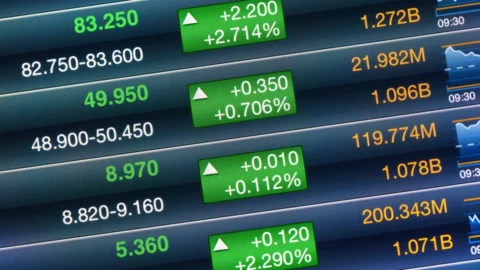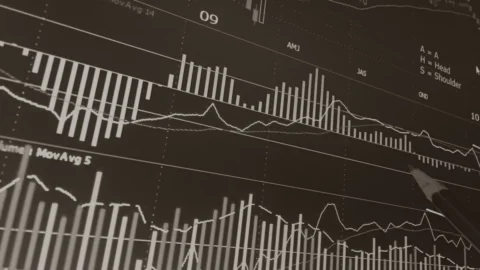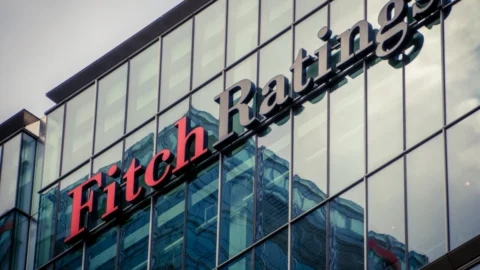RGWM Market Thoughts – July 31, 2018
The Economy
The big story last week was that the U.S. economic growth surged in the second quarter with preliminary data showing 4.1% GDP growth on an annualized basis. The increase was driven by the consumer as the health of the job market has spurred spending. This is Economics 101 – when people are working and feel like they have job security, they’re more at ease making both large and small purchases. More importantly, prices haven’t risen enough to curtail consumer behavior; inflation is still running at only a 2% pace or so. We think there are several factors behind this and we will discuss this further over the coming weeks.
The bigger question for the global economy is what effect the “trade wars” will have on future growth. Regardless of what is said or tweeted to which political figure, reality is that we are competing in a more globally connected world, and at the end of the day, it is in every country’s best interest to figure out how to manage the process. With no real way to handicap the war of words, we’ll stay focused on what the actual data says. Given the mid-term elections coming up in November, the political discourse and potential ramifications may become more important in the minds of investors than what is actually happening in the economy.
The Markets
Equities rose on a global basis as trade tensions were reduced after President Trump and European Commission president Jean-Claude Juncker vowed to lower or scrap tariffs, related to non-auto industrial goods, and work to reform World Trade Organization rules to address unfair trade practices. Emerging markets, which have been under pressure most of the year had one of its better weeks, as trade tensions eased, and the US dollar retreated. We think that these concerns are based more on technical than fundamental factors, but they have negatively impacted emerging markets returns this year.
In U.S. markets, equities were dominated by earnings. Most notably, Facebook Inc. (FB) tumbled as much as 20% and lost over $120b worth of market cap. The social media giant announced that revenue growth rates are likely to decelerate in the second half and be below 10%, which was well below analyst expectations. One of our portfolio holdings, Twitter Inc. (TWTR) also fell over 20%, despite their revenue and earrings surprising on the upside, the stock price couldn’t recover after announcing a decline in monthly users. We have a further discussion on this in the ‘Thoughts and Analysis’ section, so keep reading!
One factor that we have been mindful of, even prior to the recent spate of disappointing earnings reports, is a concern about whether prices in the high-flying tech sector have moved too far ahead of fundamentals. Certainly, the Facebook, Netflix, Twitter and Intel announcements last week seem to indicate that technology may be in for a pause in performance. However, given all of the investor anxiety of tech and despite all of the headline furor, you might be surprised to hear that on a total return basis, the S&P 500 hit its 12th all-time high of the year at Wednesday’s close.
Thoughts and Analysis
Given the overall equity market performance so far this year (S&P +4.82%), and the role that the technology sector has played in leading the market (XLK +11.34%), it’s inevitable to see articles calling for the end of tech dominance. There are numerous reasons to be concerned in the short term – FAANG over-representation, stretched tech valuations, long in the tooth bull market etc.- but there are equally as many reasons to remain invested over the longer term. We have technology exposure in our portfolios, and we have seen some of our risk measures in the sector increase relative to overall returns. As a result, during our rebalance earlier this month, we made some changes in portfolios that decreased our overall exposure to technology, both in our TAAP portfolios and our individual equity positions. However, it is important to note the reasons behind our actions. We ultimately adjusted the portfolio NOT because any one single factor stood out – rather it was our analysis of the risk relative to the reward that mandated the change. We adjusted the overall portfolio based on the risk, not the return.
We managed the risk in our Twitter (TWTR) equity holdings in the same manner. We have been holders of the stock since last year and have significant gains since our initial purchase last May, and we continue to be long term believers in the platform. However, given the heightened risks in the sector discussed earlier, combined with the earnings misses by Netflix and Facebook, we were concerned last week about how the stock would react on a similar miss going into the Friday earnings release. However, since we are still positive over the long term, we did not want to miss the upside if Twitter continued to beat expectations. Focusing on the risk side of the equation, we entered in to an option swap strategy that limited our downside and provided about 60% of the upside participation. In short, we traded short term upside for downside protection.
This turned out to be a good move in that Twitter is now down 30% from Thursday’s close. The reason that we bring this up is not to point out how smart we are – in fact, this trade was done because we recognize that we aren’t that smart! If we were REALLY smart, we would have sold the stock at $43 prior to earnings and bought it back at $31 today. That is a home run in the investment world. However, our investment philosophy is not based on hitting home runs – it is based on consistently hitting singles and doubles and trying not to strike out with the bases loaded. We changed our risk profile in TWTR through the option strategy because it made the most sense given the range of options we had at our disposal. We won’t make the “smartest guy in the room” trade but we will always look to make the best risk/ reward decision.
Quick points on emerging markets. We think there are positive developments being ignored because of the weak YTD returns. Earnings momentum is solid and increasingly broad-based. China has shifted from a tightening stance to explicit stimulus – both fiscal and monetary – to stave off any sharp slowdown. The biggest issue for emerging markets has been the U.S. dollar strength. Tighter financial conditions stemming from a stronger dollar and higher U.S. rates have hurt assets in countries dependent on dollar funding the hardest; however, the emerging market equities are much more than a dollar play. The underperformance this year is set against a backdrop of strong fundamentals and has made valuations much more attractive. If we see a continuation of current earnings growth we believe the returns will ultimately reflect fundamentals. The performance of emerging markets last week, in the wake of easing trade tensions, is a very positive development.
Need Some Help?
If you’d like some help from one of our CPAs or CERTIFIED FINANCIAL PLANNER (CFP®) advisors regarding this strategy and how it applies to you, the Rhame & Gorrell Wealth Management team is here to help.
Our experienced Wealth Managers facilitate our entire suite of services including financial planning, investment management, tax optimization, estate planning, and more to our valued clients.
Feel free to contact us at (832) 789-1100, [email protected], or click the button below to schedule your complimentary consultation today.
IMPORTANT DISCLOSURES:
Corporate benefits may change at any point in time. Be sure to consult with human resources and review Summary Plan Description(s) before implementing any strategy discussed herein.Rhame & Gorrell Wealth Management, LLC (“RGWM”) is an SEC registered investment adviser with its principal place of business in the State of Texas. Registration as an investment adviser is not an endorsement by securities regulators and does not imply that RGWM has attained a certain level of skill, training, or ability. This material has been prepared for informational purposes only, and is not intended to provide, and should not be relied on for, tax, legal or accounting advice. You should consult your own CPA or tax professional before engaging in any transaction. The effectiveness of any of the strategies described will depend on your individual situation and should not be construed as personalized investment advice. Past performance may not be indicative of future results and does not guarantee future positive returns.
For additional information about RGWM, including fees and services, send for our Firm Disclosure Brochures as set forth on Form ADV Part 2A and Part 3 by contacting the Firm directly. You can also access our Firm Brochures at www.adviserinfo.sec.gov. Please read the disclosure brochures carefully before you invest or send money.













